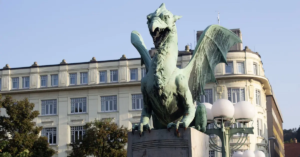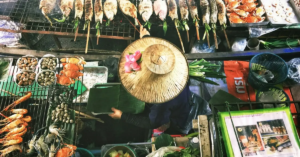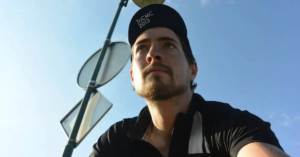
Your Quick Travel Guide to Slovenia – What to Know Before You Go
Plan your perfect trip with this quick travel guide to Slovenia—covering must-see spots, local tips, and everything you need for a stress-free adventure.
 by Andrew Scott
by Andrew Scott
September 19, 2017
What You’ll Learn
Slovenia is small in size but overflowing with beauty, culture, and surprise. In this thoughtfully curated guide, you’ll learn how to explore the best of this under-the-radar European gem. You’ll discover:
- Must-see destinations like Lake Bled, Lake Bohinj, Mt. Triglav, and the Venetian-style town of Piran
- How to enjoy Ljubljana like a local—plus tips for visiting Predjama Castle and Postojna Cave
- Where to experience local traditions like Kurent Carnival in Ptuj
- What to eat and drink: from kremsnita and Carniolan sausage to pumpkin seed oil, Cedevita, and Goriška Brda wines
- How to get around Slovenia efficiently by car, train, or budget-friendly car-sharing options
- Surprising cultural facts—like Slovenia’s love for wine, forests, and the world’s oldest vine
- Why Slovenia makes a perfect base for exploring the Balkans and Central Europe
Whether you’re a foodie, nature lover, or cultural explorer, this guide equips you with everything you need for a meaningful, efficient, and memorable trip.
Discover the Best of Slovenia – Nature, Culture, and Cuisine
With Venetian-inspired beach towns, sophisticated cuisine, and peaceful lakes surrounded by snow-capped mountains, Slovenia is the perfect combination of elegant culture and natural beauty. And if you’re thinking of visiting, here’s what you need to know.
Where is Slovenia?
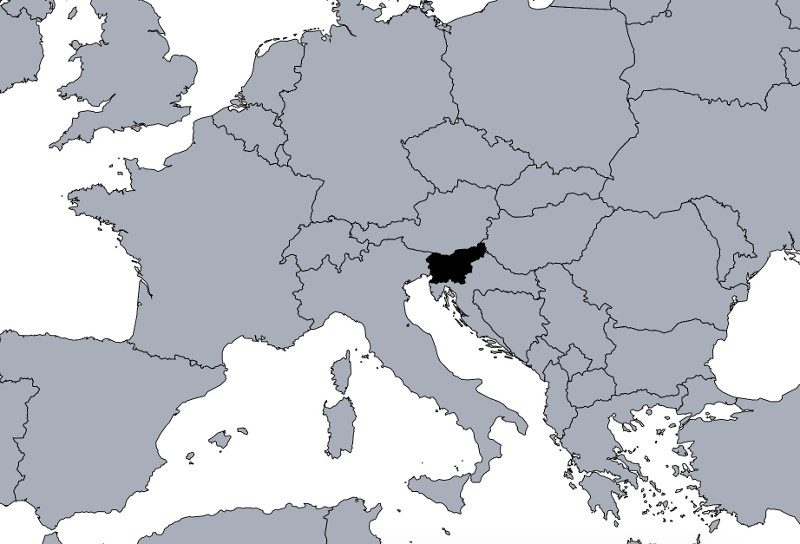
Slovenia’s location in Europe.
Slovenia is one of Europe’s smaller countries, with a total area of 7,825 sq miles (20,273 sq km). It is bordered on the north by Austria, on the east by Hungary, on the south by Croatia, and on the west by Italy. The Julian Alps dominate Northwestern Slovenia, whereas other portions of the country are covered in green rolling hills and fertile valleys. There is a short stretch of Adriatic coastline between the borders with Croatia and Italy. The capital, Ljubljana, is located at the center of the country’s rail and road network. From here, you can reach all the country’s attractions within a few hours.
What should I do in Slovenia?


Take in the Beauty of Lake Bohijn and Lake Bled
With its placid lake, fairytale island church, horse-drawn carriages, and clifftop castle, Lake Bled is one of Europe’s most romantic sites. Nearby, Lake Bohijn offers visitors scenic boat rides, miles of hiking trails, and an escape from the crowds of tourists who flock to Bled. No trip to Slovenia is complete without a stop at either of these alpine lakes. [50 minute drive from Ljubljana to Lake Bled; add 30 minutes to Lake Bohijn]

Relax in Piran
With its pastel-colored buildings, elegant squares, narrow streets, and numerous cafes, Piran is Slovenia’s most charming coastal town. It feels very Italian, having been greatly influenced by 500 years of Venetian rule. In fact, Piran was a part of Italy until 1954, when it was ceded to Yugoslavia. Today’s visitors enjoy the city’s grand cathedral, fine seaside restaurants, and the world-class salt produced nearby. [90 minute drive from Ljubljana to Piran]

Hike Mt. Triglav
Being both Slovenia’s talent peak and featured on the nation’s flag, Mt. Triglav holds an important place in every Slovenian’s heart. In fact, an old saying says that only those who have climbed Mt. Triglav can consider themselves a real Slovenian. While you may not have the energy (or willpower) to reach the top, the picturesque trails, valleys, and lakes one encounters while hiking Triglav make even the shortest trip here worthwhile. [42 minute drive from Ljubljana to the entrance of Triglav National Park]

Enjoy Elegant Ljubljana
First-time visitors to Ljubljana are confronted with a small but elegant capital city filled with cobbled streets, baroque mansions, and art nouveau bridges. Overlooking everything is a recently-refurbished castle, which stands atop a hill in the middle of downtown. Ljubljana is incredibly clean, quiet, safe, and friendly, with a number of worthwhile museums, restaurants, and bars to checkout. One can—as I did—base an entire trip to Slovenia from here. If you want to experience the city as the locals do, check out my article ‘How to Live Like a Local in Ljubljana‘.

Explore Postojna Cave
Slovenia’s most popular natural attraction, the Positional Caves consist of over 12 miles (20 km) of chambers and tunnels formed from the drainage of a nearby river. The caves were first opened to visitors in 1819, and today a mile-long railway speeds visitors to a footpath where you see incredible formations of stalactites and stalagmites in dramatically-lit spaces. Equally noteworthy are the proteus anguinus, or human fish, a species of rare amphibians who call these caves home. [40 minute drive from Ljubljana]

Discover Predjama Castle
First-time visitors to Ljubljana are confronted with a small but elegant capital city filled with cobbled streets, baroque mansions, and art nouveau bridges. Overlooking everything is a recently-refurbished castle, which stands atop a hill in the middle of downtown. Ljubljana is incredibly clean, quiet, safe, and friendly, with a number of worthwhile museums, restaurants, and bars to checkout. One can—as I did—base an entire trip to Slovenia from here. [60 minute drive from Ljubljana]

Celebrate Kurent in Ptuj
If you’re lucky enough to be in Slovenia on Shrove Tuesday, then head to Ptuj to celebrate Carnival in a unique and potentially-nightmare-educing way known as Kurent. For hundreds of years, the locals in Ptuj have marked the transition from Carnival’s celebratory atmosphere to the somberness of Lent by dressing in rather frightening costumes made of shaggy sheepskins, animal horns, and red masks. [90 minute drive from Ljubljana]
What should I eat and drink in Slovenia?
Slovenia’s cuisine is quite diverse, having influences from Italy, Austria, Hungary, and the Balkans. Try these dishes for an authentic taste of everything Slovenia has to offer:
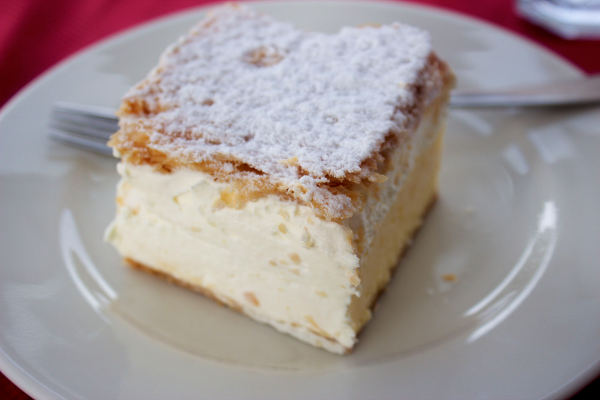
Kremsnita
While not a personal favorite, trying this cream cake at one of the posh cafes on the shores of Lake Bled is almost a right of passage.
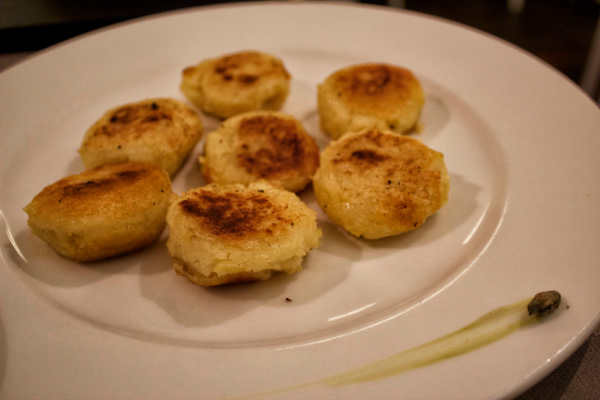
Dödole
Delicious potato dumplings from the Pannonia region often served with goulash.
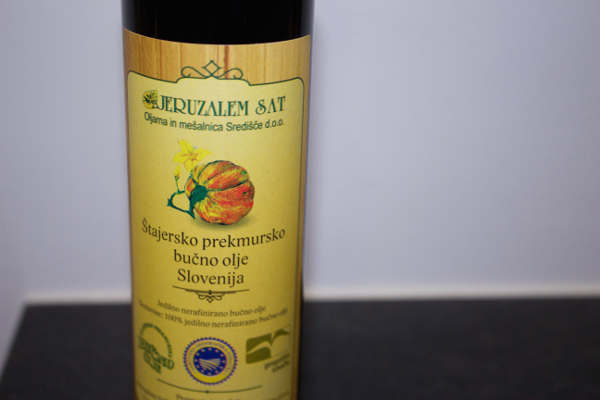
Pumpkin Seed Oil
Made from the pressed seeds of a local pumpkin variety, this Slovenian treat can be poured over salads or used as a topping for ice cream.
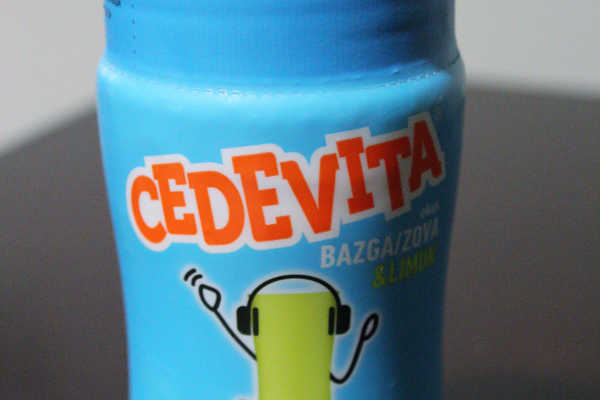
Cedevita
Originally from Croatia, but incredibly popular in Slovenia, Cedevita is an instant vitamin drink that’s both delicious and nutritious.
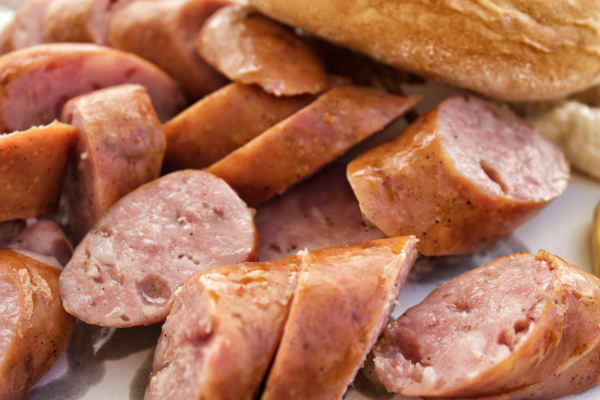
Carniolan Sausage
This delicious pork sausage is light, slightly smoked, and pairs well with mustard and a hard roll.

Wine (vino)
Whether white (belo) or red (rdeče), Slovenian wines are high quality, particularly those from the Goriška Brda region.
What about transportation?
Getting to Slovenia
Most visitors arriving in Slovenia will do so by air. The country’s main airpot is Jože Pučnik Airport, located 14 miles (23 km) outside of Ljubljana. Adria Airways is Slovenia’s national airline and connects to many other capitals in Europe. Direct trains from Munich, Vienna, Zagreb, and Zurich can also take you to Ljubljana’s railway station. It is also easy to cross into Slovenia by car, although you will have to present your passport if coming from Croatia (despite both countries being part of the EU).
Getting around Slovenia
The most convenient way to get around Slovenia is by car. The road are well maintained and major highways connect most of the main attractions. Renting a car from downtown Ljubljana is fairly easy, with pickup points near the train station. You can collect a car at the airport. If you are bringing your own vehicle into the country, please note that you must buy a vignette, which can be purchased at border crossings or at gas stations, to use Slovenia’s highways. For the budget traveler, public transportation is also a good option. Slovenia’s network of trains, run by Slovenske železnice, and buses are the best in the Balkans, being both clean and inexpensive for European standards. However, there may be limited service on weekends, so plan ahead. Another option is to join a car share using BlaBlaCar.
Fun facts about Slovenia
-Maribor, Slovenia’s second-largest city, is home to the oldest vine in the world.
-Slovenia’s 1991 War of Independence was the first war in Europe since World War II.
-Slovenia has more religious buildings per capita than any other country in Europe.
-Slovenian’s love their wine. There is a winery or vineyard for every 70 people.
-Slovenia has 46 kilometers of coastline, or about .02 meters per person.
-The first married couple to climb Mount Everest were from Slovenia.
-Half of Slovenia’s total surface area is forest.
Frequently Asked Questions
What are the must-visit places in Slovenia?
The must-visit places in Slovenia include Lake Bled, known for its stunning island church and clifftop castle; the peaceful Lake Bohinj for hiking and scenic boat rides; Ljubljana, Slovenia’s charming capital; and Postojna Cave, home to incredible stalactite formations. Don’t forget to visit Predjama Castle and take in the view of the beautiful Julian Alps from Mt. Triglav.
What should I eat and drink while in Slovenia?
Slovenia offers a variety of delicious dishes, including Kremsnita (cream cake from Lake Bled), Carniolan sausage, and dödole (potato dumplings). Be sure to try local specialties like pumpkin seed oil and enjoy a glass of fine Slovenian wine, especially from the Goriška Brda region.
How can I get around Slovenia?
The most convenient way to get around Slovenia is by car, as the country has well-maintained roads and highways that connect all major attractions. Public transportation is also available, with trains and buses that are affordable and clean. For budget travelers, car-sharing services like BlaBlaCar can be a great option too.
Sign up for honest travel tips, reflections, and resources — no spam, ever.
 October 29, 2016
October 29, 2016
Best Travel Food 2016 – 7 of the Best Things I Ate While Traveling
December 24, 2016
